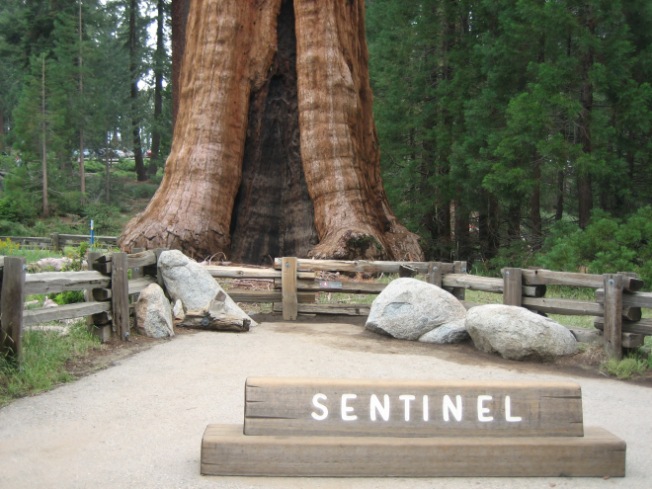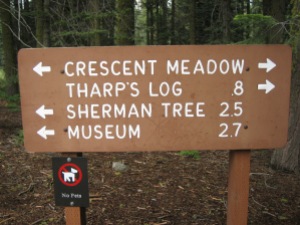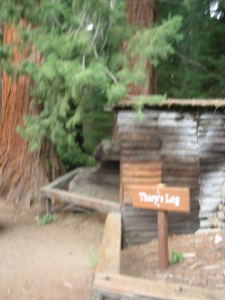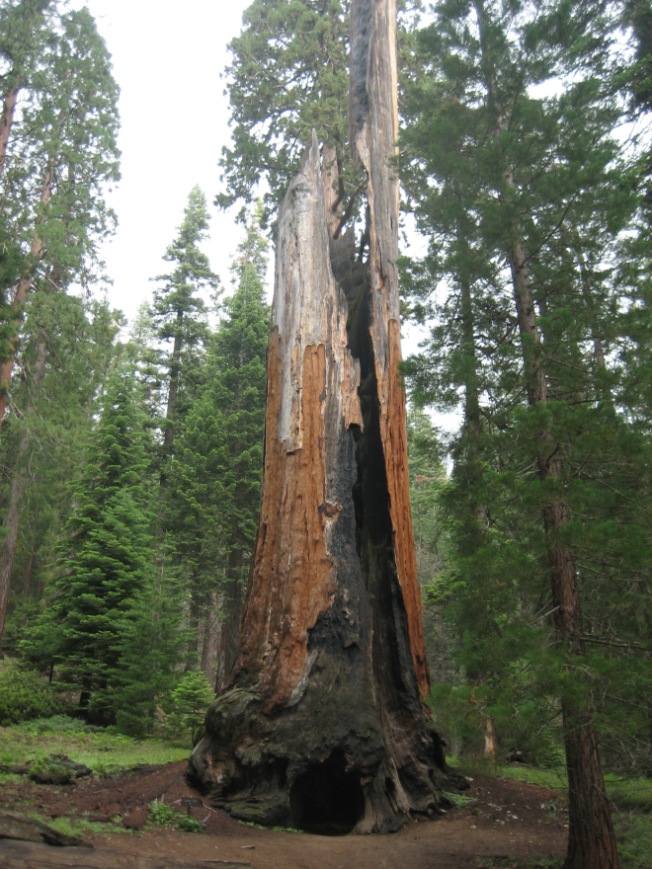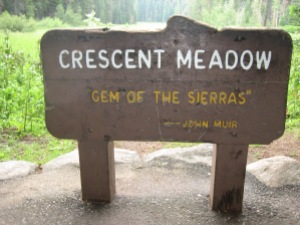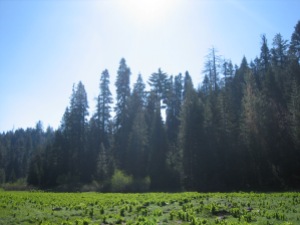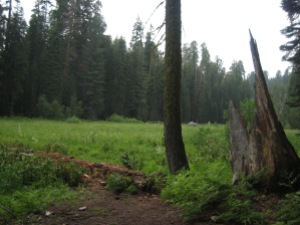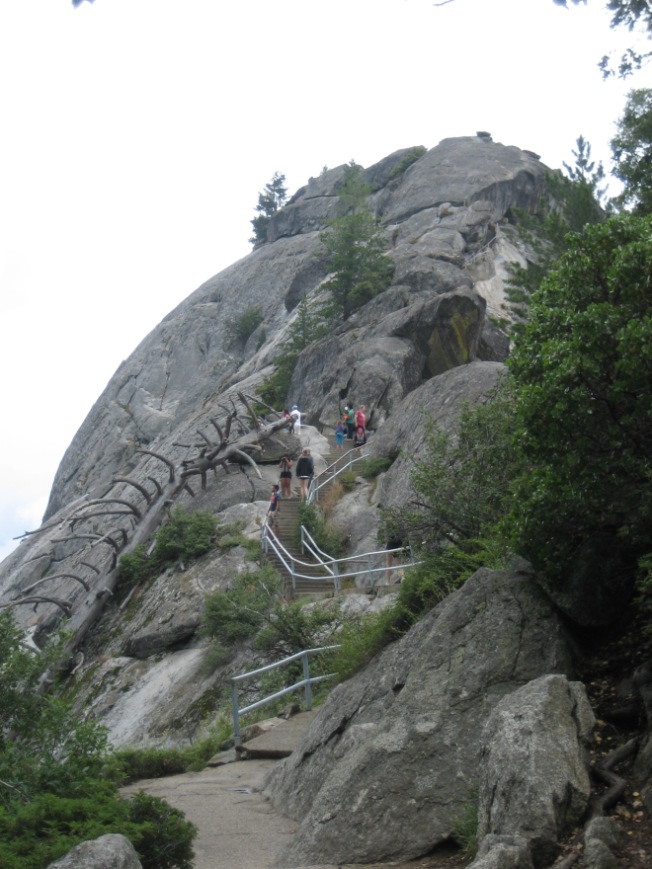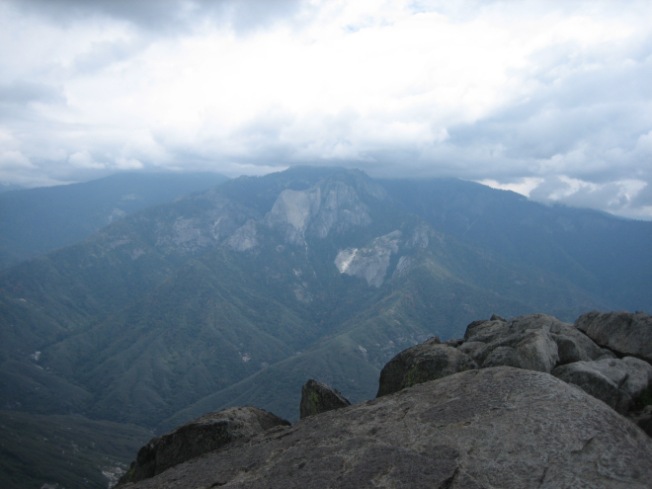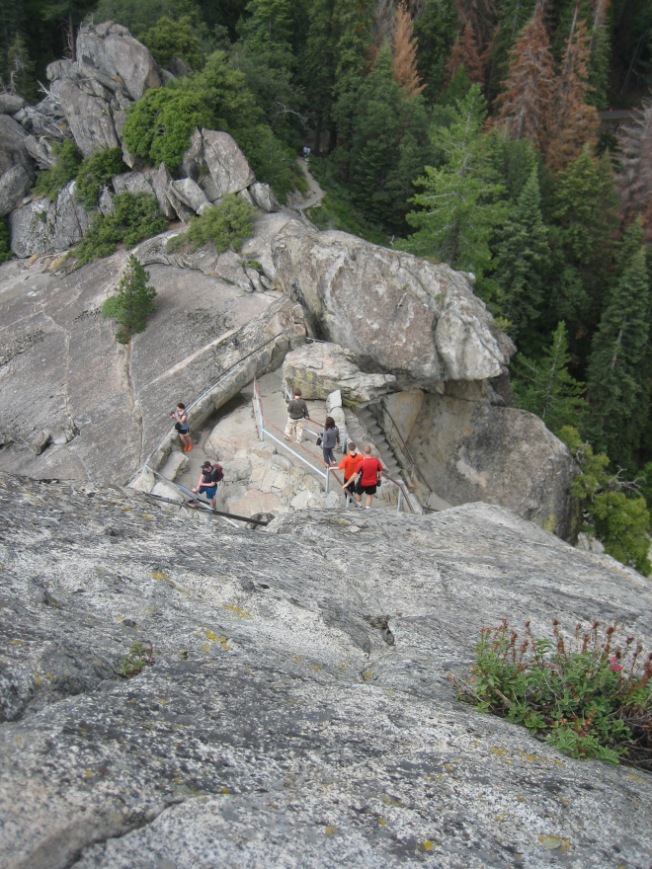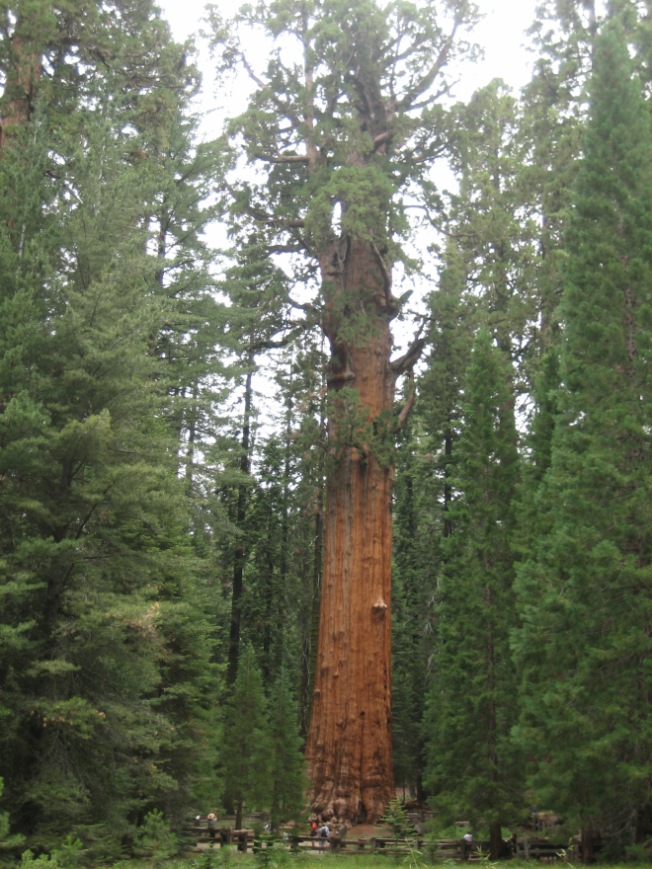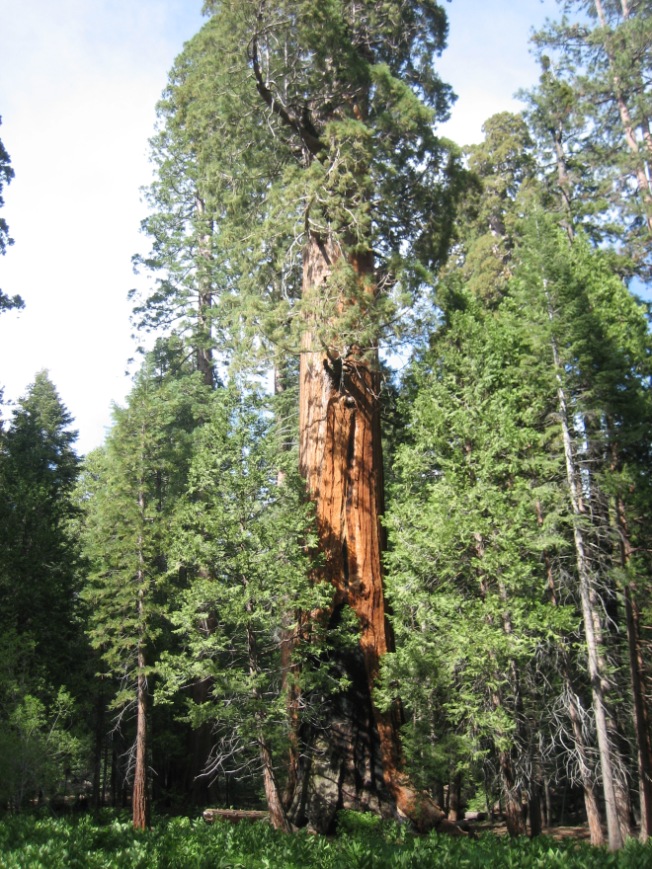I had just climbed Moro Rock and was riding the shuttle to Crescent Meadow.
Most of the time the shuttles were too small for all the people who wanted to ride, and this was a Monday! I don’t know what happens on the weekends when surely there are more people in Sequoia National Park.
The shuttle I was riding had sixteen seats, with standing room for another eight or ten people.
I saw a pattern emerge throughout the day. Even though I had no idea when a shuttle was going to arrive, I seemed to wander over to the pickup spot early, when there were maybe one or two other people waiting. Usually I’d sit and rest while waiting. As other would-be passengers arrived, they tended to congregate closer to the road, paying little heed to folks already there. When the shuttle arrived, there was a blob of humanity instead of an orderly line, and at the front of the blob were usually people who had not been there the longest.
I’m not a law and order kind of gal, but sometimes it makes sense to wait your turn (no cutting!) and line up in an orderly manner. But tourist attractions and limited seating sure can turn people into barbarians.
I’d already been frustrated climbing Moro Rock by people going in the opposite direction pushing past me and simply refusing to yield on the narrow path, even when it was the sensible thing to do. So many times on that climb I had to hug the rock when the person barreling past me had a wide spot to step into, but refused to stop for a moment.
When the shuttle to Crescent Meadow arrived, I made my way to the front of the blob of humanity that had arrived after me. I even made a wisecrack to the mother of the family who’d been waiting almost as long as I had: It’s like trying to get a lifeboat on the Titanic around here.
I did make it onto the shuttle and even got a seat next to the window in the first row on the right.
When we pulled into the Crescent Meadow parking area, people were waiting to board. The group wasn’t big, maybe eight people.
When the driver opened the door, I didn’t jump up and try to push past the young man sitting on my left. I was waiting to let other passengers exit before I made my way out. But before anyone could exit, the people outside began boarding the bus.
I blame the driver to a large extent. She should have told the people outside to wait to board until anyone exiting was out the door. But the people outside didn’t even pause to let anyone out before they started rambling in.
(These little buses only had one door, so everyone entered and exited from the same spot. However, the shuttles that went to the General Sherman Tree and the Lodgepole area were full size buses with two doors. Several times when I was trying to exit one of those buses through the rear door, incoming passengers were trying to push their way into the bus through the very same door. Had these people never ridden public transit? How did they not know to enter in the front and exit from the rear?)
When the new passengers boarded the bus without pause to let anyone out, my temper tantrum began. I cringe now at my behavior and beg forgiveness of Miss Manners and everyone. I know we must not try to fight rudeness with more rudeness, but I let my frustration slip out.
As the first and then the second passenger stepped on the bus, I loudly asked Really? I was standing in front of my seat by that point. My seatmate had made no attempt to move so I could pass by. Perhaps the incomers would have stopped if his legs and feet had been in the aisle, but he remained immobile.
Then I addressed the incoming passengers directly, saying Y’all are just going to come on in before we have a chance to get out? You’re not going to let us out?
At that point, I thought the incomers were blocking a mass exodus. I thought I was speaking for the people, leading us all out of the bus past the rude interlopers! Then I realized I was the only one wanting to leave the bus. My righteous anger turned to embarrassment.
The incomers responded to me with a bit of confusion mingled with a whole lot of who cares. The first ones in (a woman and a man, both with accent that sounded other than American to me) where kind of saying Oh, should we have waited? You want to get out? (I’m paraphrasing.) They never stepped aside or paused in their boarding. The driver never said Let this [crazy] lady out.
At that point I thought (but did not say aloud) Fuck all y’all and pushed my way past my seatmate and past the people still coming through the door.
I know my outburst was rude (and please take this as an apology before the Universe to Miss Manners and everyone), although I’m not sure what would have been the proper thing to say. I guess I could have said Excuse me; pardon me; excuse me as I pushed my way past the people and out the door. And I probably should have waited for everyone to board before I made my exit, but I honestly had a moment of panic when I thought the incoming passengers might very well block the aisle and not give me room or opportunity to leave.
But am I correct that people should be allowed to exit (the bus, the elevator, the restroom) before those on the outside try to get in?
It seems like they would have wanted to let me off the bus, if only so one of the newcomers could have taken my seat.
 The Trail of 100 Giants is interpretive trail located on the Western Divide Highway in the Sequoia National Forest.
The Trail of 100 Giants is interpretive trail located on the Western Divide Highway in the Sequoia National Forest. According to a Forest Service website ,
According to a Forest Service website ,
 When I walked the trail, visitors were allowed to leave the path in order to get right up next to the trees, proving ample opportunities for tree hugging. (In the Sequoia National Park, the most famous trees–the General Sherman and the Sentinel Tree, for example–are fenced off to protect their root systems from the huge number of tourists.
When I walked the trail, visitors were allowed to leave the path in order to get right up next to the trees, proving ample opportunities for tree hugging. (In the Sequoia National Park, the most famous trees–the General Sherman and the Sentinel Tree, for example–are fenced off to protect their root systems from the huge number of tourists. Some of the trees on the Trail of 100 Giants have hollow trunks, allowing visitors to stand or sit inside the tree. It is absolutely magical to be able to exist within such an ancient living creature. One of my favorite trees is called the Goose Pen. A person can stand entirely within that tree and look up and see the sky through an opening in the trunk.
Some of the trees on the Trail of 100 Giants have hollow trunks, allowing visitors to stand or sit inside the tree. It is absolutely magical to be able to exist within such an ancient living creature. One of my favorite trees is called the Goose Pen. A person can stand entirely within that tree and look up and see the sky through an opening in the trunk.




